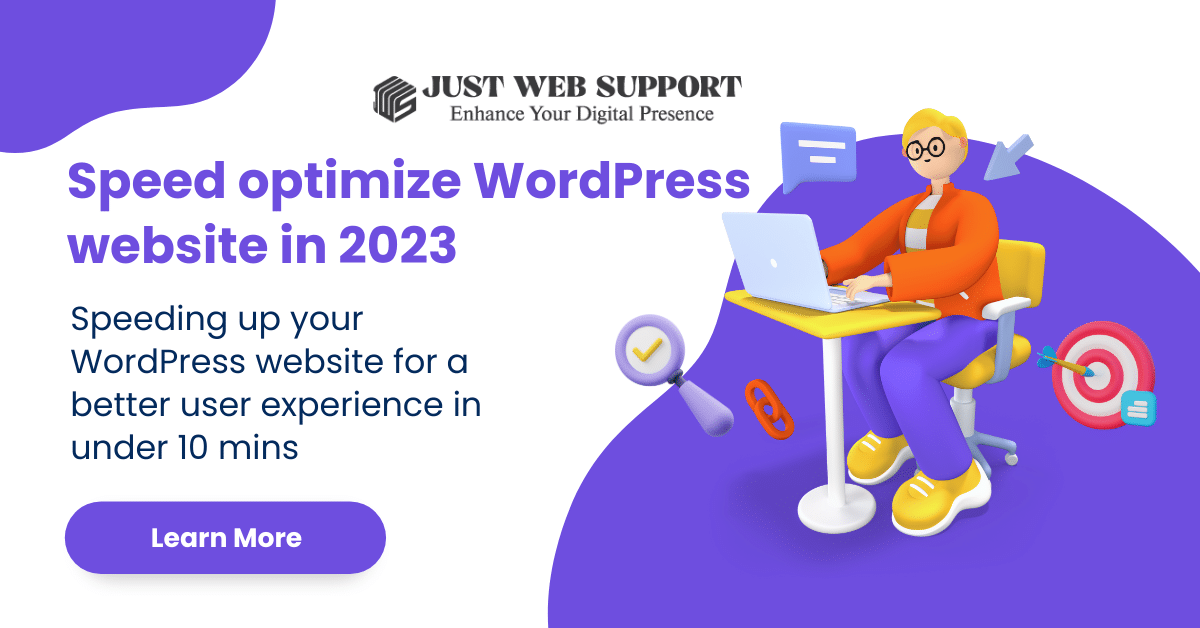
To speed optimize a WordPress website, you can try the following steps:
- Enable caching: Caching can speed up your website by storing static versions of your pages and posts in the cache so that they can be served to users more quickly. You can enable caching by using a caching plugin, such as W3 Total Cache or WP Super Cache.
- Optimize images: Large images can slow down your website, so optimizing them for the web is essential. You can do this by using an image optimization plugin, such as WebP or Smush, which can reduce the file size of your images without sacrificing their quality.
- Use a content delivery network (CDN): A CDN is a network of servers that distributes your content across different locations, and it can help speed up your website by delivering your static content (such as images, JavaScript, and CSS files) from a server that is closer to the user. You can use a CDN by installing a plugin, such as Cloudflare.
- Minimize the use of plugins: While plugins can add valuable features to your website, they can also slow it down if they are not optimized or if you have too many of them installed. Try only to use the essential plugins for your website and delete any that you don’t need.
- Enable Gzip compression: Gzip compression can help speed up your website by compressing your files and reducing their size before they load to the user’s browser. You can enable Gzip compression by adding the following code to your .htaccess file:
<IfModule mod_deflate.c>
AddOutputFilterByType DEFLATE text/html text/css application/javascript
</IfModule> - Minify CSS and JavaScript files: Minifying, your CSS and JavaScript files, can help speed up your website by removing unnecessary characters, such as whitespace and comments, from the code. You can minify your files using a plugin like Autoptimize or wp-rocket.
- Use a lightweight theme: The theme you use on your WordPress website can significantly impact its speed. Try to use a lightweight theme that is optimized for performance and avoid heavy themes that are bloated with unnecessary or unrelated features.
Following these steps, you can speed-optimize your WordPress website, improve its performance, and improve search engine indexing.
Commonly asked questions
WordPress speed optimization is the process of improving the performance of a WordPress website by reducing its loading time and improving its overall speed.
Optimizing the speed of a WordPress website is important because it can improve the user experience, increase the number of visitors and pageviews, and improve the website’s search engine ranking. A slow-loading website can cause users to leave the site, which can lead to a decrease in traffic and revenue.
There are many factors that can cause a WordPress website to be slow, including large images, unoptimized plugins, and excessive use of themes and customizations. Other common causes of slow WordPress websites include a lack of caching, a slow hosting provider, and a lack of Gzip compression.
There are several steps that you can take to speed up your WordPress website, including enabling caching, optimizing images, using a content delivery network (CDN), minimizing the use of plugins, enabling Gzip compression, minifying CSS and JavaScript files, and using a lightweight theme.
While it is not necessary to use a plugin to optimize the speed of your WordPress website, using a plugin can make the process easier and more efficient. There are many plugins available that can help you optimize your website’s speed, such as caching plugins, image optimization plugins, and minification plugins.
Optimizing the speed of your WordPress website is generally safe and will not cause any harm to your website or its content. However, as with any change to your website, it is always a good idea to backup your website before making any significant changes, in case something goes wrong.



Recent Comments